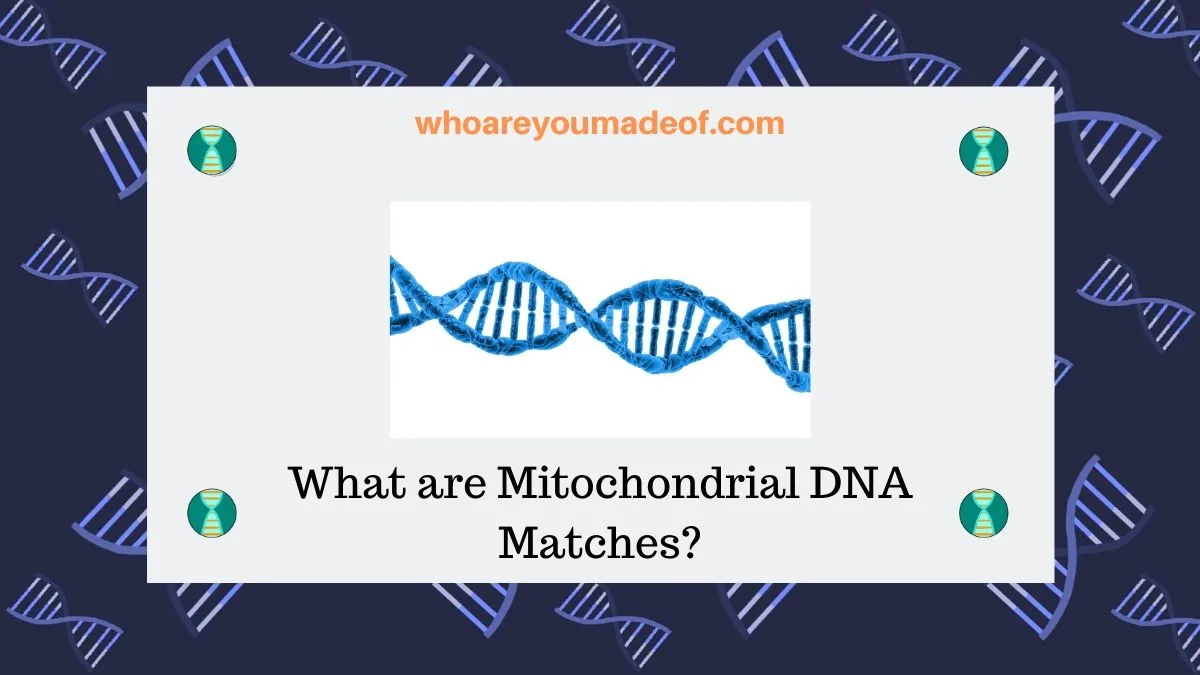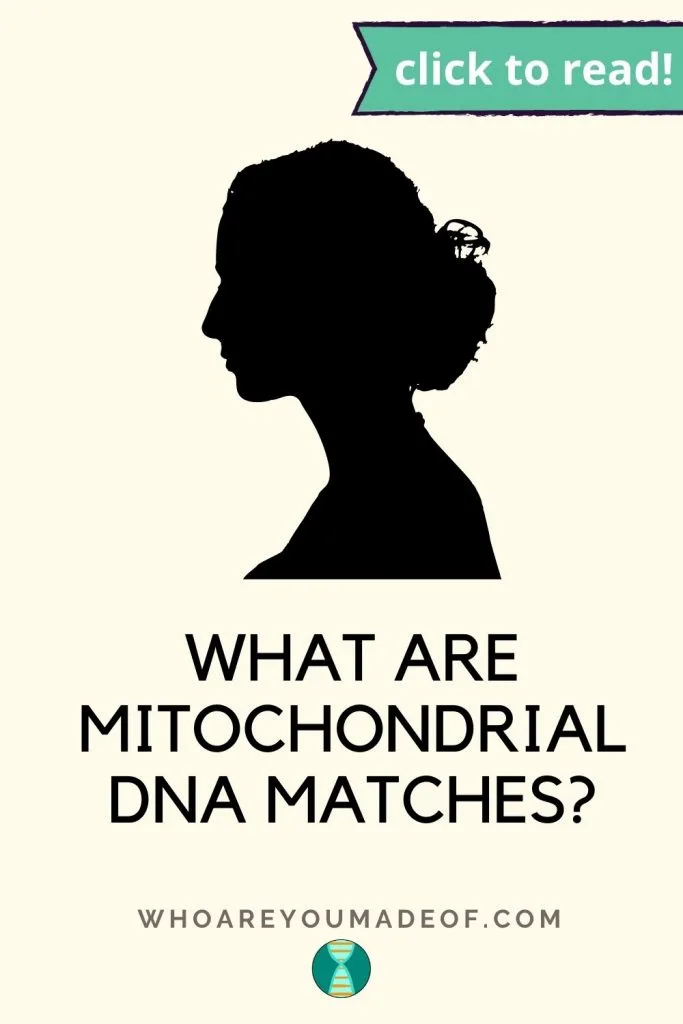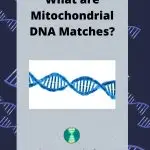Do you want to know what mitochondrial DNA matches are? In this article, you will learn how to interpret your mitochrondrial DNA match list, as well as learn what you can do with information learned from your matches.
Plus, if you haven't yet tested your mtDNA, you can find out which test is best in the final section of this post.

Most people who are interested in DNA matches understand the type of DNA matches that we get from autosomal DNA testing. Autosomal DNA matches, which are best for researching our recently ancestry on both sides of our family, are matches that share identical DNA segments from within our numbered chromosomes.
Mitochrondrial DNA, also known as mtDNA, is very different from autosomal DNA. Everyone inherits their mitochondrial DNA from their mothers, which means that mtDNA matches can only be used to learn about our direct maternal ancestors.
In other words, mtDNA matches can help us learn about our mother's mother's mother's mother's mother's (etc, etc) direct ancestors. Even though mitochrondrial DNA can only reveal information about a small portion of our ancestors, it can provide a fascinating window into the distant past.
What are mitochondrial DNA matches?
Mitochondrial DNA matches are people who share the same direct-line maternal ancestors. The direct maternal ancestor could be as recent as a mother, in the case of two sisters who share the same mother. mtDNA matches could also indicate a direct-line maternal ancestor tens of thousands of years back in time.
When DNA testing companies examine our mtDNA, they examine the mitochondrial DNA found within our cells to locate SNPs within the coding region and hypervariable regions. Each of these regions contains SNPs that mutate very slowly or relatively quickly over time.
The amount of time it can take for a mutation to occur can range from just a few hundred years to several thousand.
The coding region is the region of our mtDNA that mutates very slowly over time. Our hypervariable regions mutate more rapidly.
Over time, researchers have identified these regions and named them with capital letters which signify our mtDNA haplogroup. Additional information contained within these regions provides details about mutations that have occurred and we can be assigned a subclade, which is a sub-group of the mtDNA haplogroup.
The more detailed the haplogroup/subclade match, the closer the genetic and genealogical relationship.
How do they find our mtDNA matches?
Other people who have done mtDNA testing who share the same haplogroup and/or subclades with you are your mtDNA matches.
Anyone who shares the same mtDNA haplogroup and/or subclade is technically a mtDNA match. In order to identify whether someone is a mtDNA match to you, all you need to know is their haplogroup.
Some companies, like Family Tree DNA, provide mtDNA testing and a list of mtDNA matches with the names of other customers who have also tested their mtDNA and share the same haplogroup/subclade.
How to interpret mitochondrial DNA matches
As I mentioned before, the genetic and genealogical distance between two mtDNA matches can vary drastically.
A mother and a son will share the same mtDNA haplogroup and subclade, as they are both inherited their DNA from the same direct-line maternal ancestor (the grandmother). This is, of course, a very close relationship!
Two twelfth cousins descended from a woman who lived 450 years ago will also share the same haplogroup, and perhaps even the same subclade of their haplogroup. It is very uncommon for two people this distantly related to be able to identify a single common ancestor.
If you know exactly how you should be related to someone and you are both descended from the same direct-line maternal ancestor, then you should be mtDNA matches. This should be true, technically, no matter how distantly you are related.
You can also use mtDNA matches in order to determine whether someone in not directly descended from a direct-line maternal ancestor. For example, if you have a group of cousins who are all descended from the same maternal ancestor and one person who should match does not, you can assume that there is a break* in the maternal line somewhere.
This "break" could have occurred either in line of the group that all matches, or the maternal line of the single person who doesn't. In other words, there could be an error in a family tree somewhere generations back.
How to get a list of mtDNA matches
If you haven't yet gotten your list of mtDNA matches, I would strongly recommend doing the mtFULL SEQUENCE test from Family Tree DNA. You will, of course, receive your mitochondrial DNA matches, along with other helpful information that can help you trace the ancient origins of your direct maternal line.
You can order your mtFull Sequence test using the following sponsored link:
Conclusion
I sincerely hope that this post has helped you better understand your mtDNA results, and more specifically, your mitochondrial DNA matches. If you have any questions about something that you read in this post, or if you would like to add your own experience with mtDNA matches, I would love to hear from you in the discussion below.
Thank you for being here today.



